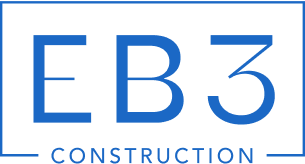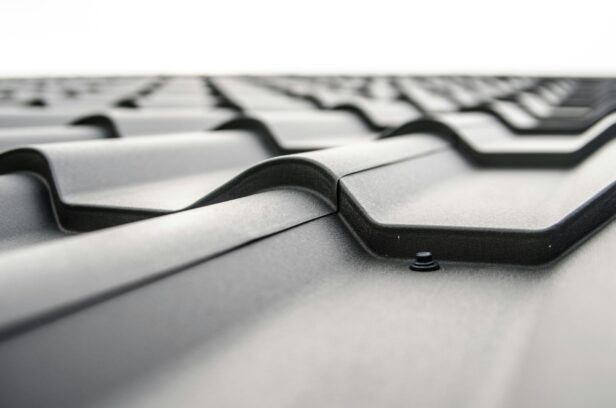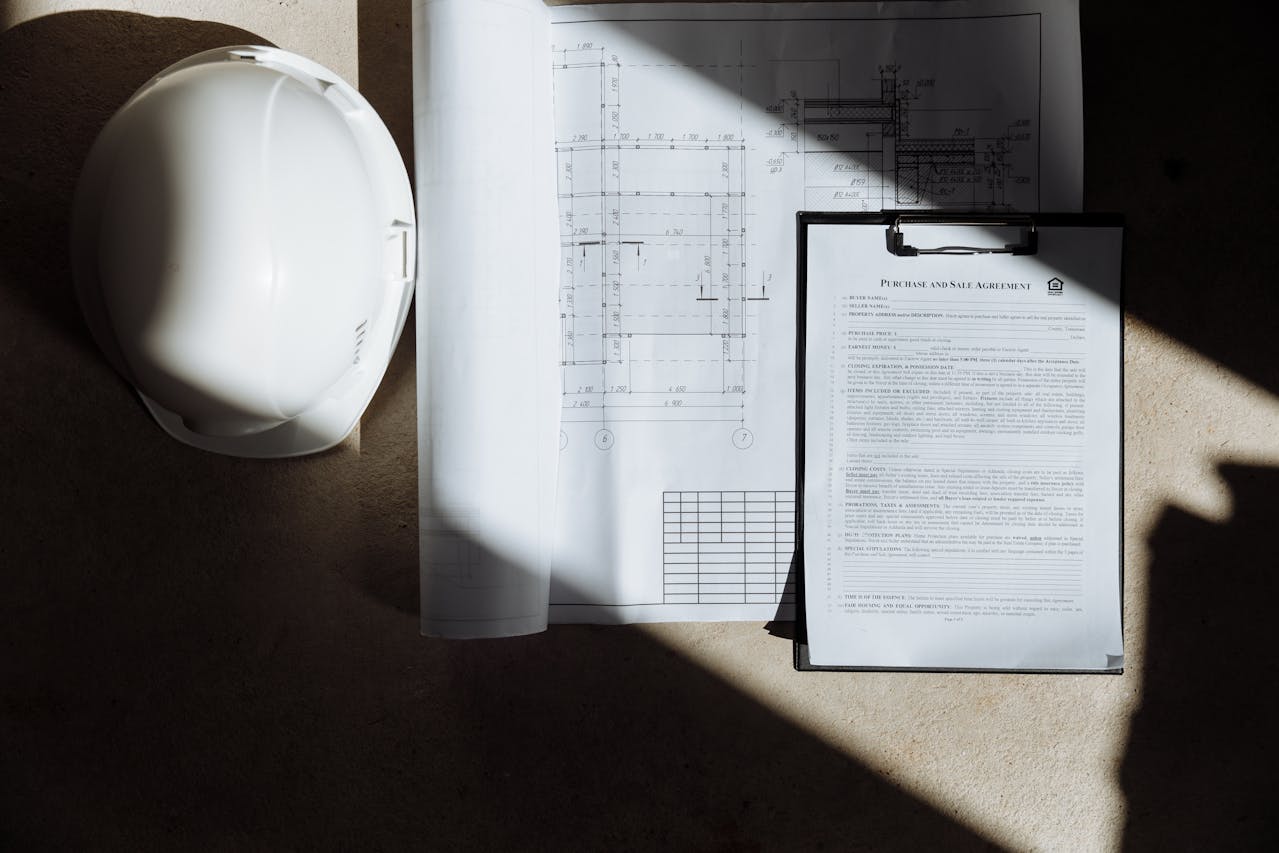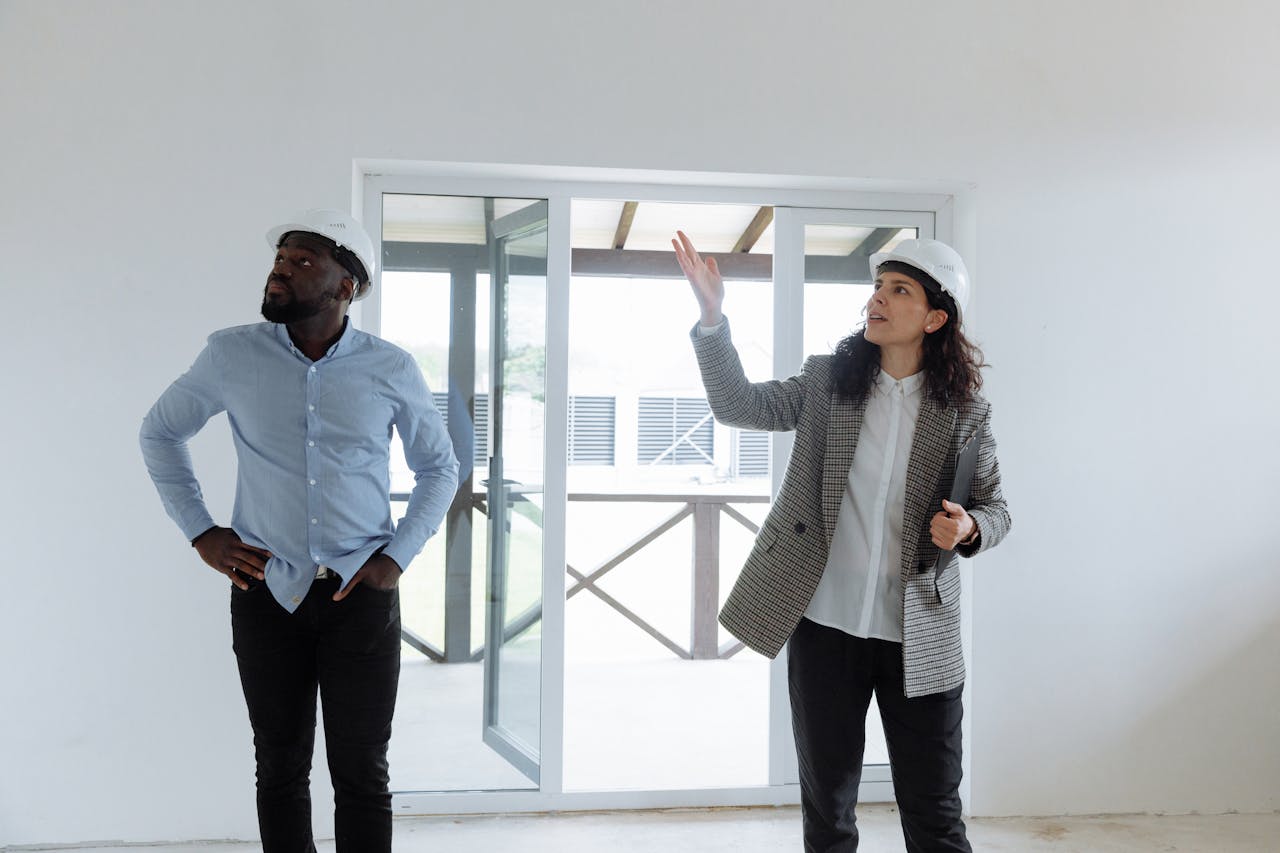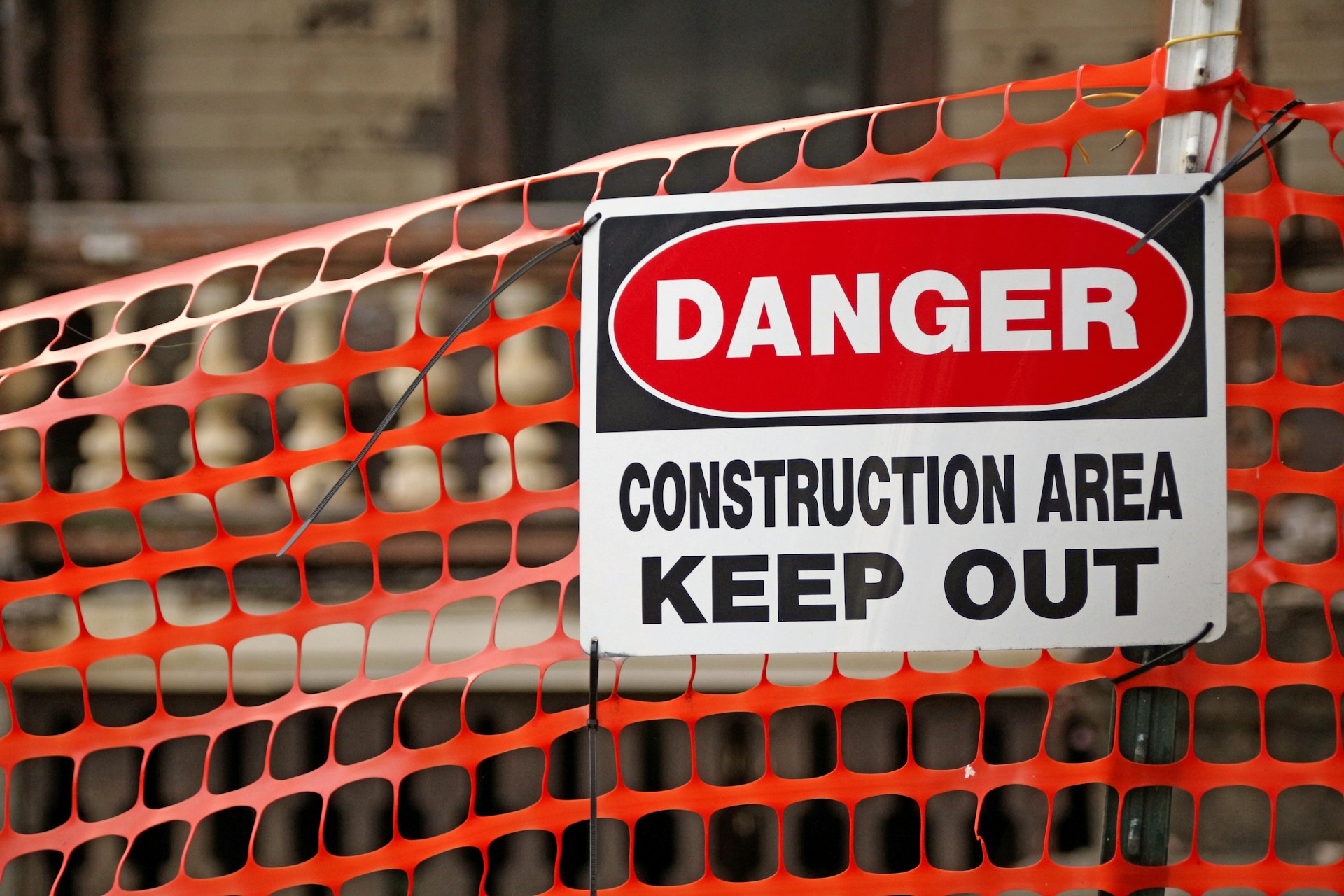A roof structure forms the critical framework at the top of any building project we develop. More than just the visible cap on a property, this integrated system of structural components provides foundational support for everything from shingles to insulation. When we construct roofs for developers and property owners, we consider how these elements work together to protect their investment from environmental elements while ensuring the building’s structural integrity.
The essential components of a roof structure include rafters, trusses, ridge boards, collar beams, and struts—all engineered to bear both dead loads (the roof’s weight) and live loads (snow, wind pressure, and maintenance traffic). During construction, we focus on how these components interact with wall plates and connections to properly transfer loads to the building’s load-bearing walls. This is particularly important in areas with heavy snowfall or high winds, where precise engineering is crucial for structural performance.
Roof structures vary in form based on architectural requirements. From traditional pitched designs with excellent drainage capabilities to complex Mansard configurations maximizing usable space below, we customize the structural approach to the project’s specific needs. Many commercial developments now include specialized roof structures like barrel vaults or space frames that offer both visual appeal and practical functionality. When constructed properly, these structures create valuable attic or loft spaces, significantly increasing a property’s usable square footage—transforming what might otherwise be empty space into profitable storage, mechanical equipment housing, or additional living or working areas.
What Functions Does a Roof Structure Serve?
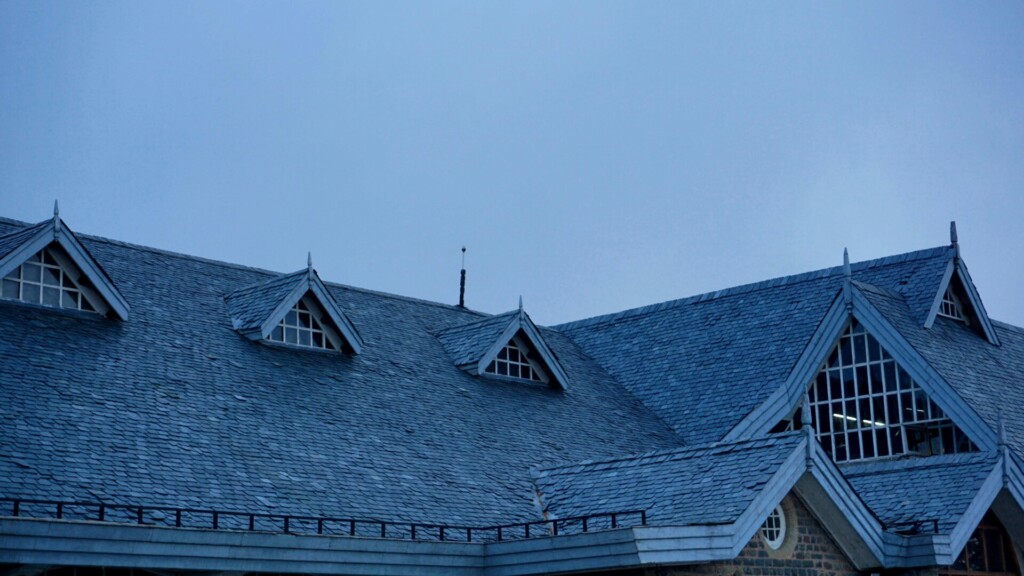
A well-designed roof structure serves as more than just the top layer of a building. When constructing roofs for our clients, we focus on engineering systems that perform multiple critical functions simultaneously. Each component works together to protect the structure below while contributing to the building’s overall efficiency and longevity.
Weather Protection and Water Management
The fundamental function of any roof we install is protecting the building from weather elements. Our roofing systems create impermeable barriers against rain, snow, hail, and wind. We design roof slopes and drainage features to channel water away from the structure, preventing pooling that could lead to leaks and structural damage.
During harsh winter months, proper roof construction becomes even more crucial. In regions with heavy snowfall, we calculate load-bearing capacities to handle snow accumulation and incorporate features that prevent ice dam formation, which occurs when heat escaping from the roof melts snow that later refreezes at the eaves.
Flashing, gutters, and downspouts form an integrated water management system we install to direct moisture away from the building envelope, protecting walls and foundations from water damage. Each component must be precisely installed to maintain the roof’s weather resistance over decades.
Thermal Regulation and Energy Efficiency
Roof structures play a vital role in a building’s thermal performance. We integrate insulation materials with specific R-values to maintain interior temperatures by preventing heat transfer. In winter, proper roof insulation retains warmth, while in summer, it keeps external heat out.
Our construction teams understand that up to 25% of a building’s heat can be lost through a poorly insulated roof. When designing and building roof systems, we carefully select materials and methods that enhance energy efficiency, ultimately reducing heating and cooling costs for property owners.
Beyond basic insulation, we incorporate ventilation systems that work in tandem with the insulation layer. Proper ventilation prevents moisture buildup in the attic space, which can degrade insulation effectiveness and lead to mold growth and structural deterioration.
Structural Integrity and Building Stability
The roof structure we design distributes weight and provides essential lateral stability to the entire building. Through careful engineering, we ensure the roof system transfers loads safely to the supporting walls and foundation. This structural role is especially important in areas prone to high winds, earthquakes, or heavy snow loads.
Unlike some general contractors who might view the roof as a separate component, we approach it as an integral part of the whole building system. In traditional masonry construction, the roof was often conceived as a ‘bolt-on’ framework, but modern practices recognize the roof’s contribution to the overall structural integrity.
Our teams meticulously calculate load paths, ensuring each truss, rafter, and connection point can withstand both dead loads (the weight of the roof itself) and live loads (temporary weights like snow or maintenance workers). This thorough approach prevents sagging, structural failure, and costly repairs.
Fire Resistance and Safety
Fire protection is another critical function we build into roof structures. We select and install materials with appropriate fire ratings to meet or exceed local building codes. In wildfire-prone regions, we recommend and implement Class A fire-rated roofing materials that resist ignition and limit flame spread.
Beyond material selection, we construct proper firebreaks and barriers within roof assemblies to compartmentalize potential fires and slow their progression. This attention to fire resistance helps protect both property and lives, providing occupants valuable time to evacuate in emergencies.
The roof’s fire resistance capability works with the building’s overall fire safety system, including sprinklers and smoke detectors, to create comprehensive protection against this serious threat.
Sound Insulation and Acoustic Performance
A properly constructed roof significantly contributes to a building’s acoustic comfort. We design roof assemblies that dampen external noise from rainfall, traffic, aircraft, and neighborhood activities—critical for residential properties, healthcare facilities, and educational institutions.
The combination of dense insulation materials, air gaps, and mass in the roof structure creates a composite system that attenuates sound transmission. Our construction methods address both airborne and impact noise, ensuring the roof contributes to a quiet, comfortable interior.
In commercial projects, we often implement specialized acoustic treatments within the roof assembly to meet specific performance requirements, creating environments conducive to productivity and well-being.
Security and Privacy Enhancement
An often overlooked function of the roof structure is its contribution to building security and privacy. When we design and build roof systems, we ensure they don’t create unintended access points for intruders. Proper roof construction eliminates vulnerable areas that could compromise the building’s security.
For properties in dense urban environments, the roof design also contributes to privacy by preventing visual access from neighboring structures. Strategic placement of mechanical equipment and screening elements on the roof further enhances privacy while maintaining the building’s aesthetic appeal.
Through careful attention to these security aspects during construction, we create roof systems that protect not only against the elements but also against unwanted human intrusion and observation.
What Are the Main Components of a Roof Structure?
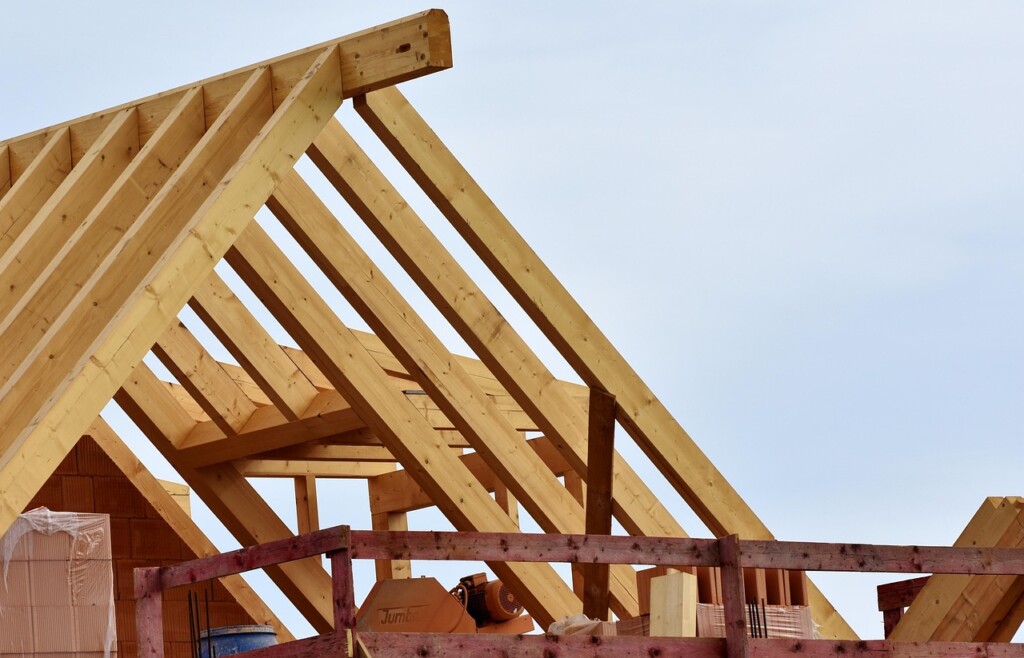
When constructing pitched roofs for developers and property owners, we focus on creating a robust structural framework that withstands environmental stresses while supporting the roofing materials above. The backbone of an effective roof system is its internal structure, consisting of several critical components working in harmony.
The truss system forms the primary framework of the roof structure. We design and install these triangular frameworks to distribute weight evenly across the building’s load-bearing walls. During recent supply chain challenges affecting lumber prices, we’ve adapted our truss designs to maintain structural integrity while optimizing material usage.
Rafters: The Structural Backbone
Rafters serve as inclined beams running from the ridge to the eaves, forming the main skeleton of the roof. Typically installed in pairs that meet at the apex, rafters create the roof’s characteristic pitch. These components support the roof deck and its loads, establishing the shape and angle of the finished roof.
For longer spans, we often incorporate underpurlins – horizontal beams supported by posts – to reinforce the mid-span of rafters. This support prevents sagging and ensures the roof retains structural integrity over time, particularly in areas with heavy snow loads.
King Posts and Vertical Support
The king post configuration is one of the most widely used truss designs, particularly for simpler roof structures. We position this central vertical post beneath the apex of the top chord beams to provide critical support. The king post supports the two principal rafters, creating an inverted V-shape at the top of the truss.
Struts extend outward from the king post to the rafters, providing diagonal support that prevents the principal rafters from collapsing inward. This arrangement effectively distributes weight across both sides of the truss structure. We find this configuration particularly effective for commercial properties where clean spans and open attic spaces are desired.
Horizontal Elements: Purlins and Collar Beams
Purlins play a crucial role in our roof assemblies as horizontal elements running perpendicular to the rafters. We secure these with purlin cleats – specialized brackets creating rigid connections to the rafters. This enhances the overall stability of the roof structure and provides additional support for the roof covering.
Collar beams, sometimes called collar ties, horizontally connect opposing rafters, usually positioned in the upper third of the roof space. These horizontal members help distribute loads among the rafters and resist the outward thrust that could push walls apart. When designing attic spaces for potential future use, we carefully position these beams to maximize headroom while maintaining structural integrity.
The ridge board sits at the absolute peak of the roof, serving as the horizontal member to which the upper ends of opposing rafters connect. While primarily serving as an alignment guide during construction, the ridge provides the finished peak that defines the roofline. For complex roof geometries with multiple ridges, we ensure precise alignment and proper flashing details at all intersections.
The tie beam forms the horizontal base of the truss triangle, running along the entire width of the roof. It connects the lower ends of the principal rafters, providing crucial tension resistance that prevents the rafters from spreading outward under load. This connection helps distribute weight evenly and prevents structural failure.
In practical application, these components function as an integrated system. When building roof structures, we ensure each element is properly sized, connected, and positioned to work with the others. This systematic approach allows us to create durable, resilient roof structures that protect buildings for decades.
| Truss Type | Max Span (meters) | Common Applications |
|---|---|---|
| Flat Truss | 6 | Simple and economical, often used in residential and low-rise commercial buildings |
| King Post Truss | 10 | Small to medium-sized buildings |
| Queen Post Truss | 12 | Larger buildings with slightly more complex structures |
| Gable Truss | 15 | Common design for residential buildings, adaptable to various roof pitches |
| Fink Truss | 25 | Residential and light commercial construction with versatile load distribution |
| Attic Truss | 30 | Provides additional living or storage space within the roof |
| Mono Roof Truss | 35 | Single sloping roof, ideal for extending buildings such as porches or extensions |
| Hip Truss | 45 | Opt for complex building designs needing good aesthetics and drainage |
| Scissor Truss | 50 | Used for vaulting ceilings in residential or commercial spaces |
For buildings with complex architectural requirements, we sometimes modify traditional configurations to accommodate design features like vaulted ceilings or clerestory windows. These adaptations require careful engineering to maintain structural principles while achieving desired aesthetic and functional outcomes.
What Are the Different Types of Roof Structures?
In construction projects, selecting the appropriate roof structure is one of our most important design decisions. As general contractors, we know that this choice affects the building’s appearance, functionality, durability, and cost-effectiveness. The roof system must align with the client’s architectural vision while offering adequate protection against local weather conditions.
Each type of roof structure provides specific advantages for different applications. Whether for residential developments or commercial properties, understanding these variations helps us deliver solutions that endure over time. Let’s delve into the primary roof structure types we commonly use in our construction projects.
Couple Roof Structures
The couple roof is a fundamental structure in our building portfolio. It consists of common rafters fixed at two points: the ridge beam at the top and the wall plate at the bottom. While elegantly simple, couple roofs have limited applications due to their span constraints — typically not exceeding 16 feet without additional support.
We often use couple roofs for smaller outbuildings, porches, or simple residential structures with modest spans. The straightforward framing makes them cost-effective for the right applications, though we generally recommend alternative structures for larger spaces. In areas with significant snow loads, such as Colorado’s mountain communities, we carefully assess whether a couple roof provides sufficient structural integrity.
The simplicity of couple roofs offers advantages during construction. Their straightforward design allows for faster installation than more complex systems, and in renovation projects where maintaining the original roofline is important, they can replicate historical aesthetics while complying with modern building codes.
Trussed Roof Systems
For projects requiring greater span capabilities or enhanced structural support, we typically recommend trussed roof systems. These prefabricated triangular frameworks effectively distribute loads and can span significantly greater distances than couple roofs — often up to 60 feet without intermediate support in residential applications.
Trussed roofs are fundamental to modern residential construction. Their factory precision ensures consistent quality, while their engineered design offers exceptional strength-to-weight ratios. We collaborate with truss manufacturers to customize designs for nearly any architectural vision, from simple gable roofs to complex multi-pitched configurations.
The versatility of trussed systems extends beyond their span capabilities. They enable open floor plans by eliminating the need for load-bearing interior walls. In commercial projects, we can use trussed systems to create clear-span retail spaces or offices with flexible layouts. Prefabrication also accelerates our construction timeline, as trusses arrive on site ready for installation once the wall framing is complete.
Framed Building Structures
For more substantial commercial and institutional projects, we frequently employ sophisticated framed building systems that incorporate specialized roof structures. These systems expand our design options beyond conventional residential approaches and allow us to create distinctive architectural features while meeting performance requirements.
Series of trusses represent a common method, where parallel trusses span the building and support the roof deck. This creates efficient, economical structures for warehouses, manufacturing facilities, and large retail spaces. Space frames enhance this concept by utilizing three-dimensional truss systems to create dramatic cantilevers or support complex roof geometries.
Barrel vaults provide an elegant solution for spaces requiring height and volume, such as gymnasiums or auditoriums. The curved profile provides natural strength while creating a distinctive visual element. For projects needing unique architectural expressions, braced domes or folded slabs permit us to create signature structures that stand out in the built environment.
Each framed building system requires careful engineering and specialized construction techniques. Our coordination with structural engineers begins in the earliest design phases to ensure these systems integrate properly with other building elements like HVAC and lighting.
Commercial Multi-Story Roof Systems
In multi-story commercial buildings, the roof structure typically follows a different approach than in residential or single-story commercial construction. These buildings usually feature a simple roof slab supporting the roof build-up — the waterproofing layers, insulation, and often mechanical equipment or rooftop amenities.
The roof slab in these cases is commonly constructed of reinforced concrete, in line with the structural system of the floors below. This offers a stable platform for rooftop equipment and simplifies the structural analysis. In regions with seismic considerations, like California, we ensure the roof slab integrates properly with the building’s lateral force-resisting system.
The apparent simplicity of these roof slabs belies their design complexity. They must accommodate drainage slopes, equipment loads, potential future solar installations, and meet increasingly stringent energy codes. For projects seeking LEED certification, we often include vegetated roof sections or high-albedo surfaces to mitigate heat island effects.
When collaborating with specialty consultants on complex facilities like data centers or laboratories, we pay particular attention to the roof slab’s ability to support concentrated equipment loads and accommodate necessary service penetrations.
Specialty Acoustic Roof Structures
Buildings with specialized acoustic requirements, like concert halls or recording studios, require unique roof solutions. When located in noisy environments like flight paths or urban centers, these structures need significant mass and structural discontinuity for proper acoustic isolation.
In these instances, we often implement “roof-within-a-roof” systems that physically separate the inner acoustic ceiling from the outer weather barrier. These complex assemblies incorporate multiple mass layers, resilient connections, and carefully detailed penetrations to prevent acoustic bridging.
The weight of these systems can be considerable, necessitating robust structural support. We coordinate extensively with acoustic consultants to ensure the roof structure achieves the required Sound Transmission Class (STC) ratings while complying with all building code requirements for weather protection, fire resistance, and energy performance.
Recent advances in acoustic materials have expanded our options for these specialized applications. New composite systems provide excellent acoustic performance with reduced weight, making them viable for a broader range of building types and budgets.
| Truss Type | Application | Max Span (meters) |
|---|---|---|
| Flat Truss | Simplest and used in low-pitched roofs | 6 |
| King Post Truss | Small to medium-sized buildings | 10 |
| Queen Post Truss | Larger buildings, visually appealing | 12 |
| Gable Truss | Common in residential construction | 15 |
| Fink Truss | Residential and light commercial | 25 |
| Attic Truss | Creates additional living space | 30 |
| Mono Roof Truss | Used in structures like sheds and workshops | 35 |
| Hip Truss | Larger buildings needing complex design | 45 |
| Scissor Truss | Open planned living with vaulted ceilings | 50 |
Selecting the appropriate roof structure requires balancing architectural vision, budget constraints, and performance needs. We evaluate each project’s specific requirements — considering span, local climate, construction timeline, and long-term maintenance implications. This thoughtful approach ensures we deliver roof systems that protect our clients’ investments while supporting their operational needs.
As construction technologies advance, we remain committed to incorporating innovative roof structure solutions that enhance building performance. From lightweight tension structures that minimize material use to integrated solar roof systems that generate power, we are constantly expanding our toolkit to provide the most effective solutions for each unique project.
What External Components Complete a Roof System?
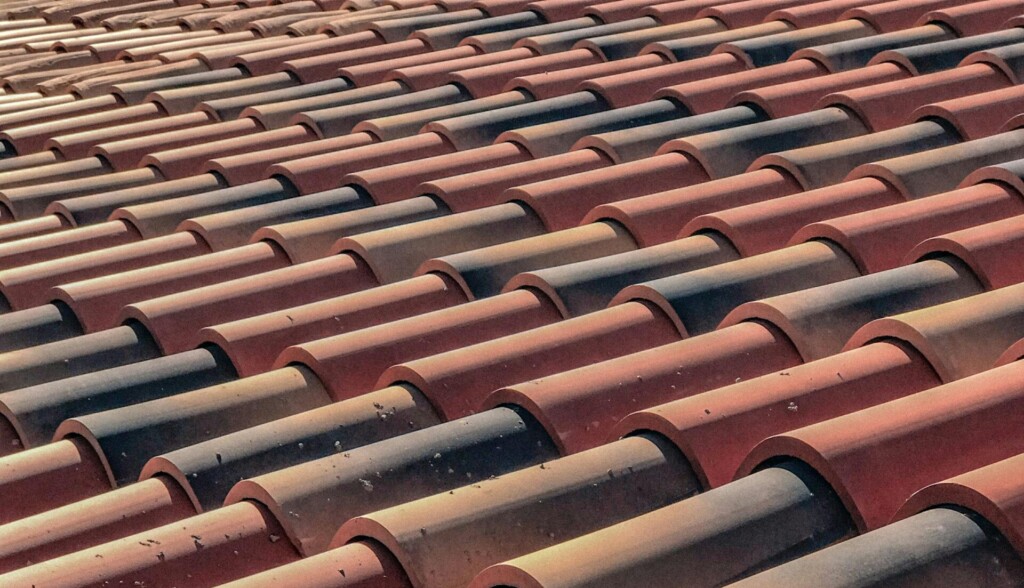
When building a comprehensive roof system, the external components are crucial to its performance and longevity. These visible elements work in harmony with the underlying structure to create a watertight, durable barrier that protects the entire building envelope.
Roof Covering: The First Line of Defense
The roof covering serves as the primary protective layer against environmental elements. This material is secured directly to the roof deck or sheathing, with selections based on building requirements, climate considerations, and aesthetic preferences. Asphalt shingles are the most common choice for residential properties due to their cost-effectiveness and reliable performance.
For upscale developments or commercial properties, slate, clay tiles, or metal roofing systems are often installed to offer extended lifespans and enhanced durability. The covering must properly overlap and seal to prevent water intrusion while withstanding UV exposure, temperature fluctuations, and wind uplift forces typical in severe weather events.
Underlayment: The Hidden Protector
Beneath the visible roof covering, underlayment is installed as a critical secondary water barrier. Modern synthetic underlayments have largely replaced traditional felt paper, offering superior tear resistance and moisture protection. This component provides temporary weather protection during construction and serves as a backup system if the primary covering fails.
Quality underlayment, when properly installed, becomes particularly important in ice dam-prone regions or areas with heavy rain. We ensure complete coverage with proper overlaps at all seams, with special attention to vulnerable areas like valleys and penetrations.
During roof replacement projects, inspecting the existing underlayment often reveals valuable information about previous water intrusion issues that might otherwise go undetected. This allows our teams to address underlying problems rather than simply covering them up.
| Underlayment Material | Composition | Main Advantages | Disadvantages |
|---|---|---|---|
| Asphalt-Saturated Felt | Paper or fiberglass mats soaked in asphalt | Affordable, reliable, provides waterproof layer | Water resistance varies with weight, less flexible, can tear easily |
| Synthetic Underlayment | Polyethylene, Polyolefin, Polypropylene | Superior strength, longevity, enhanced water and UV resistance | More expensive than felt |
| Rubberized Asphalt | Asphalt combined with rubber polymers | Self-sealing, excellent waterproofing, thermal stability | More expensive than other types |
Flashing Systems: Sealing the Transitions
Flashing is strategically installed at roof transitions and penetrations to prevent water infiltration at these vulnerable junctions. Typically fabricated from galvanized steel, aluminum, or copper, these metal components direct water away from critical areas. Proper flashing installation around chimneys, skylights, and vent pipes prevents some of the most common roof leaks encountered in repair work.
Step flashing integrates with wall cladding at roof-to-wall intersections, while valley flashing protects the channels where roof planes meet. Drip edge flashing, installed along eaves and rakes, prevents water from backing up under the roof covering and protects underlying fascia boards from moisture damage.
Installation techniques vary by region to account for local weather patterns. In hurricane-prone areas, flashing is secured with additional fasteners and sealants to withstand high winds, while in northern regions, ice and water shield products are incorporated under the flashing to prevent ice dam-related leaks.
Eaves, Fascia, and Soffits: The Roof’s Edge System
The eave system forms the finished edge of the roof structure and provides both practical function and aesthetic appeal. Eaves extend beyond the building walls to direct water away from the structure and provide shade. Fascia boards are installed along the roof’s horizontal edge to create a finished appearance while providing a mounting surface for gutters.
Soffits enclose the underside of the roof overhang, protecting exposed rafters while providing essential ventilation through integrated vents. This ventilation works in conjunction with ridge or gable vents to create proper airflow through the attic space, preventing moisture buildup and extending roof system longevity.
Modern soffit systems often incorporate continuous venting designs that maximize airflow while minimizing visible perforation patterns. The materials selected for these components balance durability, maintenance requirements, and visual integration with the building’s overall design aesthetic.
Gutter Systems: Managed Water Control
Properly functioning gutter systems capture water runoff from the roof surface and channel it away from the building foundation. Gutters and downspouts are sized based on roof area calculations and local rainfall intensity to ensure adequate capacity. Seamless aluminum gutters have become the standard installation for most projects, offering a balance of cost, appearance, and durability.
Strategic downspout placement prevents foundation erosion and basement water intrusion. Extensions or underground drain systems are often incorporated in problematic areas to direct water further from the structure. In northern climates, heated gutter systems are sometimes recommended to prevent ice dam formation, which can cause significant damage to both the gutter system and the underlying roof structure.
Regular gutter maintenance is essential for system performance. It is emphasized to property owners that clogged gutters can lead to water backing up under roof coverings, causing rot in the underlying decking and structural components.
Understanding the Complete Roof System
When approaching a construction project, one of the most critical systems requiring expertise is the roof assembly. A complete roof system involves much more than just the visible shingles; it is an integrated collection of components working together to protect your investment. Our experience shows that buildings with properly installed roof systems maintain their structural integrity longer and require fewer emergency repairs throughout their lifecycle.
Each component in the system serves a specific purpose. From the roof deck, which forms the foundation, to the underlayment providing a secondary moisture barrier, to the flashing that prevents water intrusion at vulnerable joints—every element must be specified and installed correctly. The storms in February 2023 across the Midwest demonstrated how buildings with complete, professionally installed roof systems withstood extreme conditions better than those with shortcuts or compromised installations.
The difference between a roof that merely covers a building and one that truly protects it lies in the details of the complete system. We coordinate all elements, from ventilation—preventing moisture buildup and extending roof life—to proper insulation, which optimizes energy efficiency, ensuring they work together as a cohesive unit. When property owners understand their roof as a system rather than a single component, they make more informed decisions about materials, maintenance schedules, and budgeting throughout the building’s lifecycle.
Ready to ensure your next project features a complete roof system built to perform? Contact us at EB3 Construction to discuss your roofing needs.
